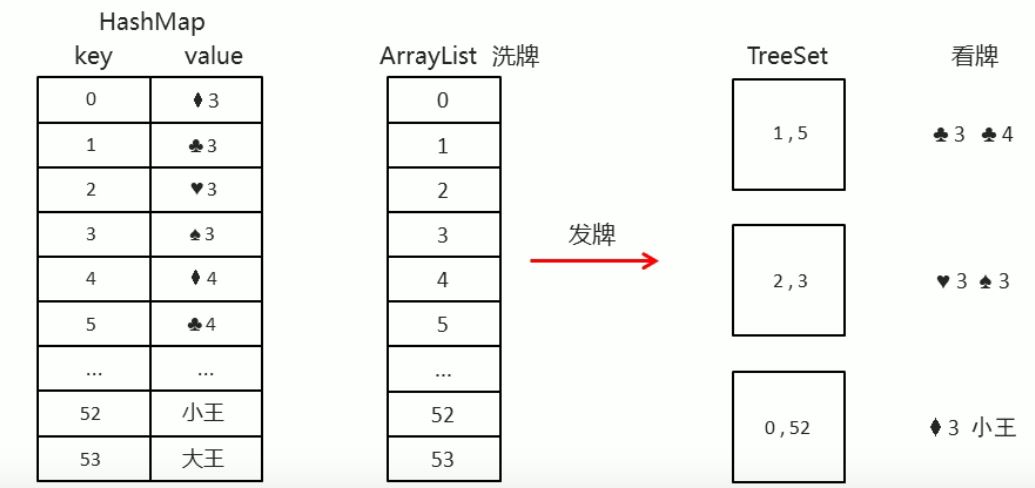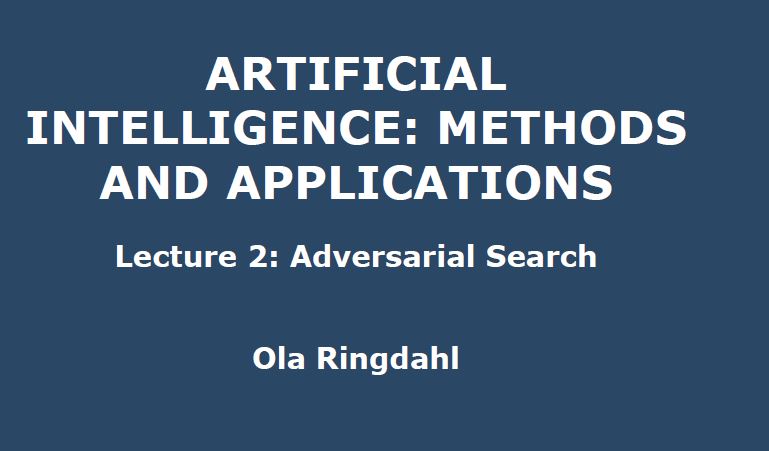前言
b站java课程学习笔记整理。
b站视频: 黑马程序员全套Java教程_Java基础入门视频教程,零基础小白自学Java必备教程
257. Map集合概述和特点
Map集合概述:Interface Map<K,V> 其中 K: 键的类型; V:值的类型。
将键映射到值的对象;不能包含重复的键;每个键可以映射到最多一个值。
创建Map对象使用多态的形式。
1 2 3 4 5 6 7 8 9 10 11 12 13 14 15 16 17 18 19 20 21 22 package Map集合对象;import java.util.HashMap;import java.util.Map;public class MapDemo public static void main (String[] args) Map<String,String> map = new HashMap<String,String>(); map.put("2016160061" ,"孙健耕" ); map.put("jisu0012" ,"Jiangeng Sun" ); map.put("2016160061" ,"孙健森" ); System.out.println(map); } }
258. Map集合的基本功能
方法名
说明
V put(K key, V value)添加元素
V remove(Object key)根据键删除键值对元素
void clear()移除所有的键值对元素
boolean containsKey(Object key)判断集合是否包含指定的键
boolean containsValue(Object value)判断集合是否包含指定的值
boolean isEmpty()判断集合是否为空
int size()集合的长度,也就是集合中键值对的个数
1 2 3 4 5 6 7 8 9 10 11 12 13 14 15 16 17 18 19 20 21 22 23 24 25 26 27 28 29 30 31 32 33 34 35 36 37 38 39 40 package Map集合对象;import java.util.HashMap;import java.util.Map;public class MapDemo public static void main (String[] args) Map<String,String> map = new HashMap<String,String>(); map.put("2016160061" ,"孙健耕" ); map.put("jisu0012" ,"Jiangeng Sun" ); map.put("2016160060" ,"孙健森" ); System.out.println(map.remove("jisu0012" )+",删除后的map为" +map); System.out.println(map.remove("jisu" )+",删除后的map为" +map); map.clear(); System.out.println(map); map.put("2016160061" ,"孙健耕" ); map.put("jisu0012" ,"Jiangeng Sun" ); System.out.println(map.containsKey("jisu0012" )); System.out.println(map.containsKey("2016160000" )); System.out.println(map.containsValue("孙健耕" )); System.out.println(map.containsValue("孙健森" )); System.out.println(map.isEmpty()); System.out.println(map.size()); map.clear(); System.out.println(map.isEmpty()); } }
259. Map集合的获取功能
方法名
说明
V get(Object key)根据键获取值
Set<K> keySet()获取所有键的集合
Collection<V> values()获取所有值的集合
Set <Map.Entry<K,V>> entrySet()获取所有键值对对象的集合
1 2 3 4 5 6 7 8 9 10 11 12 13 14 15 16 17 18 19 20 21 22 23 24 25 26 27 28 29 package Map集合对象;import java.util.Collection;import java.util.HashMap;import java.util.Map;import java.util.Set;public class MapDemo2 public static void main (String[] args) Map<String,String> map = new HashMap<String,String>(); map.put("2016160061" ,"孙健耕" ); map.put("jisu0012" ,"Jiangeng Sun" ); System.out.println(map.get("2016160061" )); System.out.println(map.get("dasda" )); Set<String> keyset = map.keySet(); for (String i: keyset){ System.out.println(i); } Collection<String> mapvalue = map.values(); for (String i: mapvalue){ System.out.println(i); } } }
260. Map集合的遍历(方式1)
遍历key。
1 2 3 4 5 6 7 8 9 10 11 12 13 14 15 16 17 18 19 20 21 22 23 24 25 package Map集合对象;import java.util.Collection;import java.util.HashMap;import java.util.Map;import java.util.Set;public class MapDemo2 public static void main (String[] args) Map<String, String> map = new HashMap<String, String>(); map.put("2016160061" , "孙健耕" ); map.put("jisu0012" , "Jiangeng Sun" ); Set<String> keyset = map.keySet(); for (String key : keyset) { String value = map.get(key); System.out.println(key + "," + value); } } }
261. Map集合的遍历(方式2)
通过map集合中所有键值对对象的集合。
Set<Map.Entry<K,V>> entrySet(): 获取所有键值对对象的集合。
1 2 3 4 5 6 7 8 9 10 11 12 13 14 15 16 17 18 19 20 21 22 23 24 25 26 27 28 29 30 31 32 33 34 package Map集合对象;import java.util.Collection;import java.util.HashMap;import java.util.Map;import java.util.Set;public class MapDemo2 public static void main (String[] args) Map<String, String> map = new HashMap<String, String>(); map.put("2016160061" , "孙健耕" ); map.put("jisu0012" , "Jiangeng Sun" ); Set<String> keyset = map.keySet(); for (String key : keyset) { String value = map.get(key); System.out.println(key + "," + value); } System.out.println("----------------------------------" ); Set<Map.Entry<String,String>> entrySet= map.entrySet(); for (Map.Entry<String,String> es: entrySet){ String key = es.getKey(); String value = es.getValue(); System.out.println(key+"," +value); } } }
262. HashMap存储学生对象并遍历
1 2 3 4 5 6 7 8 9 10 11 12 13 14 15 16 17 18 19 20 21 22 23 24 25 26 27 28 29 30 31 32 33 34 35 36 37 38 package hashmap存储学生对象;import java.util.HashMap;import java.util.Map;import java.util.Set;public class HashMapDemo public static void main (String[] args) Student s1 = new Student("孙健耕" , 24 ); Student s2 = new Student("李安然" , 23 ); Student s3 = new Student("李维瀚" , 22 ); Student s4 = new Student("施霁桐" , 21 ); Map<String, Student> studentMap = new HashMap<String, Student>(); studentMap.put("2016160061" , s1); studentMap.put("2016160062" , s2); studentMap.put("2016160063" , s3); studentMap.put("2016160064" , s4); Set<String> s = studentMap.keySet(); for (String num : s) { Student person = studentMap.get(num); System.out.println(num + "," + person); } System.out.println("---------------------------" ); Set<Map.Entry<String, Student>> entrySet = studentMap.entrySet(); for (Map.Entry<String, Student> ME : entrySet) { String key = ME.getKey(); Student student = ME.getValue(); System.out.println(key + "," + student); } } }
263. 键是Student,值是String
需求:创建一个HashMap集合,键是学生对象(Student),值是居住地(String)。存储多个键值对元素,并遍历。要求保证键的唯一性。
1 2 3 4 5 6 7 8 9 10 11 12 13 14 15 16 17 18 19 20 21 22 23 24 25 26 27 28 29 30 31 32 33 34 35 36 37 38 39 40 41 42 43 44 45 46 47 48 49 50 51 52 53 54 55 56 57 package hashmap存储学生对象键是学生;public class Student private String name; private int age; public Student (String name, int age) this .name = name; this .age = age; } public Student () } public String getName () return name; } public void setName (String name) this .name = name; } public int getAge () return age; } public void setAge (int age) this .age = age; } @Override public String toString () return "Student{" + "name='" + name + '\'' + ", age=" + age + '}' ; } @Override public boolean equals (Object o) if (this == o) return true ; if (o == null || getClass() != o.getClass()) return false ; Student student = (Student) o; if (age != student.age) return false ; return name != null ? name.equals(student.name) : student.name == null ; } @Override public int hashCode () int result = name != null ? name.hashCode() : 0 ; result = 31 * result + age; return result; } }
1 2 3 4 5 6 7 8 9 10 11 12 13 14 15 16 17 18 19 20 21 22 23 24 25 26 27 28 29 30 31 32 33 34 35 36 37 38 39 40 41 42 43 44 package hashmap存储学生对象键是学生;import java.util.HashMap;import java.util.Map;import java.util.Set;public class HashMapDemo public static void main (String[] args) Student s1 = new Student("孙健耕" , 24 ); Student s2 = new Student("李安然" , 23 ); Student s3 = new Student("李维瀚" , 22 ); Student s4 = new Student("施霁桐" , 21 ); String address1 = "Mingshui" ; String address2 = "Fengjing" ; String address3 = "Fengjing" ; String address4 = "Yujing" ; Map<Student,String> studentAddressMap = new HashMap<Student,String>(); studentAddressMap.put(s1,address1); studentAddressMap.put(s2,address2); studentAddressMap.put(s3,address3); studentAddressMap.put(s4,address4); Student s5 = new Student("李维瀚" , 22 ); String address5 = "Ningbo" ; studentAddressMap.put(s5,address5); Set<Student> studentSet = studentAddressMap.keySet(); for (Student s : studentSet){ System.out.println(s + "," + studentAddressMap.get(s)); } } }
264. Arraylist嵌套HashMap
需求: 创建一个ArrayList集合,存储三个元素,每一个元素都是HashMap,每一个HashMap的键和值都是String,并遍历。
1 2 3 4 5 6 7 8 9 10 11 12 13 14 15 16 17 18 19 20 21 22 23 24 25 26 27 28 29 30 31 32 33 34 35 36 37 38 39 40 41 42 43 44 45 46 47 48 49 50 51 52 53 54 55 56 package ArrayList存储Hashmap元素;import java.util.ArrayList;import java.util.HashMap;import java.util.Map;import java.util.Set;public class AHDemo public static void main (String[] args) ArrayList<HashMap<String, String>> al = new ArrayList<>(); HashMap<String, String> map1 = new HashMap<String, String>(); map1.put("Map1中的一号" , "孙健耕" ); map1.put("Map1中的二号" , "李维瀚" ); map1.put("Map1中的三号" , "李安然" ); map1.put("Map1中的四号" , "施霁桐" ); HashMap<String, String> map2 = new HashMap<String, String>(); map2.put("Map2中的一号" , "孙健耕" ); map2.put("Map2中的二号" , "薛雨霏" ); map2.put("Map2中的三号" , "高璎榕" ); map2.put("Map2中的四号" , "张林" ); HashMap<String, String> map3 = new HashMap<String, String>(); map3.put("Map3中的一号" , "孙健耕" ); map3.put("Map3中的二号" , "陈天翔" ); map3.put("Map3中的三号" , "陈展鸿" ); map3.put("Map3中的四号" , "刘腾俊" ); HashMap<String, String> map4 = new HashMap<String, String>(); map4.put("Map4中的一号" , "孙健耕" ); map4.put("Map4中的二号" , "文新源" ); map4.put("Map4中的三号" , "黄祯" ); map4.put("Map4中的四号" , "魏彬钰" ); al.add(map1); al.add(map2); al.add(map3); al.add(map4); for (HashMap<String, String> map : al) { Set<String> keyset = map.keySet(); for (String key : keyset) { System.out.println(key + "," + map.get(key)); } } } }
注意:HashMap是Map的主要实现类,可以通过哈希值自定义去除重复元素。
265.HashMap嵌套Arraylist
需求:创建一个HashMap集合,存储三个键值对元素,每一个键值对元素的键是String,值是ArrayList,每一个ArrayList的元素是String,并遍历。
1 2 3 4 5 6 7 8 9 10 11 12 13 14 15 16 17 18 19 20 21 22 23 24 25 26 27 28 29 30 31 32 33 34 35 36 37 38 39 40 package HashMap嵌套ArrayList;import java.util.ArrayList;import java.util.HashMap;import java.util.Set;public class HashMapInArrayList public static void main (String[] args) ArrayList<String> al1 = new ArrayList<>(); ArrayList<String> al2 = new ArrayList<>(); ArrayList<String> al3 = new ArrayList<>(); al1.add("al1.1" ); al1.add("al1.2" ); al1.add("al1.3" ); al2.add("al2.1" ); al2.add("al2.2" ); al2.add("al2.3" ); al3.add("al3.1" ); al3.add("al3.2" ); al3.add("al3.3" ); HashMap<String, ArrayList<String>> hm = new HashMap<>(); hm.put("第一个数组" , al1); hm.put("第二个数组" , al2); hm.put("第三个数组" , al3); Set<String> hmKeySet = hm.keySet(); for (String num : hmKeySet) { for (String index : hm.get(num) ){ System.out.println(num + index); } } } }
266. 统计字符串中每个字符出现的次数
举例:键盘录入"aababcabcdabcde", 输出"a(5)b(4)c(3)d(2)e(1)"。
1 2 3 4 5 6 7 8 9 10 11 12 13 14 15 16 17 18 19 20 21 22 23 24 25 26 27 28 29 30 31 32 33 package 统计字符个数;import java.util.HashMap;import java.util.Scanner;import java.util.Set;public class Statistics public static void main (String[] args) Scanner sc = new Scanner(System.in); String input = sc.nextLine(); HashMap<String,Integer> hm = new HashMap<>(); String[] strArr = input.split("" ); for (String s : strArr) { if (!hm.containsKey(s)){ hm.put(s,1 ); }else { int newNum = hm.get(s)+1 ; hm.put(s,newNum); } } Set<String> strings = hm.keySet(); for (String s : strings){ System.out.print(s+"(" +hm.get(s)+")" ); } } }
个人觉得用containsKey来判断更好一点。最后不用调用remove方法去除旧的键值对,因为HashMap继承了Map,键不能重复,如果有重复的会自动更新。
267. Collections概述和使用
此类全部都由静态方法构成,为针对集合操作的工具类。注意和Collection区分(Collection是用来构造单列结合的)。
常用方法:
方法
解释
sort(List<T> list)将指定的列表按升序排序
reverse(List<?> list)反转指定列表中的元素顺序
shuffle(List<?> list)将指定的列表按随即顺序排序。常用来模拟洗牌。
注意:之前学的那个sort,reverse是Arrays包下,针对数组的方法!这个是针对列表的,注意区分。
1 2 3 4 5 6 7 8 9 10 11 12 13 14 15 16 17 18 19 20 21 22 23 24 25 26 27 package CollectionsDemo;import java.util.ArrayList;import java.util.Collections;public class CollectionsDemo public static void main (String[] args) ArrayList<Integer> al = new ArrayList<>(); al.add(10 ); al.add(20 ); al.add(30 ); al.add(40 ); al.add(50 ); System.out.println(al); Collections.reverse(al); System.out.println(al); Collections.sort(al); System.out.println(al); Collections.shuffle(al); System.out.println(al); } }
268. ArrayList存储学生对象并排序
需求: 按照年龄大小排序,年龄相同时,按照姓名的字母顺序排序。 注意之前的排序案例中是用TreeSet做的!
和TreeSet类似,还是得用比较器或者继承Comparable这个类。
1 2 3 4 5 6 7 8 9 10 11 12 13 14 15 16 17 18 19 20 21 22 23 24 25 26 27 28 29 30 31 32 33 34 35 36 37 package ArrayList存储学生对象并排序;import java.text.Collator;import java.util.ArrayList;import java.util.Collections;import java.util.Comparator;public class test public static void main (String[] args) Student s1 = new Student("孙健耕" , 24 ); Student s2 = new Student("李安然" , 23 ); Student s3 = new Student("李维瀚" , 22 ); Student s4 = new Student("施霁桐" , 21 ); ArrayList<Student> al = new ArrayList<>(); al.add(s1); al.add(s2); al.add(s3); al.add(s4); Collections.sort(al, new Comparator<Student>() { @Override public int compare (Student o1, Student o2) int num = s1.getAge()-s2.getAge(); int num2 = num==0 ? s1.getName().compareTo(s2.getName()):num; return num2; } }); for (Student s:al){ System.out.println(s); } } }
269. 模拟斗地主
需求:通过程序实现斗地主过程中的洗牌,发牌和看牌。
思路:
创建一个牌盒,也就是定义一个集合对象,用ArrayList集合实现。
往牌盒里面装牌。
洗牌,也就是把牌打散,用shuffle()实现。
发牌,也就是遍历集合,给三个玩家发牌,
看牌,也就是三个玩家分别遍历自己的牌。
1 2 3 4 5 6 7 8 9 10 11 12 13 14 15 16 17 18 19 20 21 22 23 24 25 26 27 28 29 30 31 32 33 34 35 36 37 38 39 40 41 42 43 44 45 46 47 48 49 50 51 52 53 54 55 56 57 58 59 60 61 62 63 64 package 模拟斗地主;import java.util.ArrayList;import java.util.Collections;public class DouDiZhu public static void main (String[] args) ArrayList<String> CardsBox = new ArrayList<>(); String[] colors = {"♣" , "♦" , "♠" , "♥" }; String[] marks = {"2" , "3" , "4" , "5" , "6" , "7" , "8" , "9" , "10" , "J" , "Q" , "K" , "A" }; String[] Jokers = {"小王" , "大王" }; for (String color : colors) { for (String mark : marks) { CardsBox.add(color + mark); } } CardsBox.add(Jokers[0 ]); CardsBox.add(Jokers[1 ]); Collections.shuffle(CardsBox); ArrayList<String> player1 = new ArrayList<>(); ArrayList<String> player2 = new ArrayList<>(); ArrayList<String> player3 = new ArrayList<>(); ArrayList<String> HiddenCards = new ArrayList<>(); for (int i = 0 ; i < 18 ; i++) { for (int j = 0 ; j < 3 ; j++) { if (i == 17 ) { HiddenCards.add(CardsBox.get(i * 3 + j)); continue ; } switch (j) { case 0 -> player1.add(CardsBox.get(i * 3 + j)); case 1 -> player2.add(CardsBox.get(i * 3 + j)); case 2 -> player3.add(CardsBox.get(i * 3 + j)); } } } System.out.println("选手一的牌为-------------------" ); for (String card : player1) { System.out.print(card + "," ); } System.out.println(); System.out.println("选手二的牌为-------------------" ); for (String card : player2) { System.out.print(card + "," ); } System.out.println(); System.out.println("选手三的牌为-------------------" ); for (String card : player3) { System.out.print(card + "," ); } System.out.println(); System.out.println("底牌为-------------------" ); for (String card : HiddenCards) { System.out.print(card + "," ); } } }
分析:这么搞没有排序,而且没有面向对象编程。
270. 模拟斗地主升级版思路
尝试对牌排序。
思路:
创建HashMap, 键是编号, 值是牌。
创建ArrayList, 存储编号。
创建花色数组和点数数组。
从0开始往HashSet里存储编号,并存储相应的牌。同时往ArrayList里面存储编号。
洗牌(洗的是编号),用Collections的shuffle()方法实现。
发牌(发的也是编号,为了保证编号是排序的,创建TreeSet集合接收)。
定义方法看牌(遍历TreeSet集合,获取编号,到HashMap集合找对应的牌)
271. 模拟斗地主升级版代码
1 2 3 4 5 6 7 8 9 10 11 12 13 14 15 16 17 18 19 20 21 22 23 24 25 26 27 28 29 30 31 32 33 34 35 36 37 38 39 40 41 42 43 44 45 46 47 48 49 50 51 52 53 54 55 56 57 58 59 60 61 62 63 64 65 66 67 68 69 70 71 72 73 package 模拟斗地主升级版;import java.util.ArrayList;import java.util.Collections;import java.util.HashMap;import java.util.TreeSet;public class NewDouDiZhu public static void main (String[] args) HashMap<Integer, String> CardsBox = new HashMap<>(); ArrayList<Integer> index = new ArrayList<>(); String[] colors = {"♥" , "♣" , "♠" , "♦" }; String[] values = {"3" , "4" , "5" , "6" , "7" , "8" , "9" , "10" , "J" , "Q" , "K" , "A" , "2" }; String[] Jokers = {"大王" , "小王" }; int num = 0 ; for (String value : values) { for (String color : colors) { CardsBox.put(num, color + value); index.add(num); num++; } } for (String joker : Jokers) { CardsBox.put(num, joker); index.add(num); num++; } Collections.shuffle(index); TreeSet<Integer> player1 = new TreeSet<>(); TreeSet<Integer> player2 = new TreeSet<>(); TreeSet<Integer> player3 = new TreeSet<>(); TreeSet<Integer> hiddenCards = new TreeSet<>(); for (int i = 0 ; i < 18 ; i++) { for (int j = 0 ; j < 3 ; j++) { if (i == 17 ) { hiddenCards.add(index.get(i * 3 + j)); continue ; } switch (j) { case 0 -> player1.add(index.get(i * 3 + j)); case 1 -> player2.add(index.get(i * 3 + j)); case 2 -> player3.add(index.get(i * 3 + j)); } } } checkCards("玩家1" , player1, CardsBox); checkCards("玩家2" , player2, CardsBox); checkCards("玩家3" , player3, CardsBox); checkCards("底牌" , hiddenCards, CardsBox); } public static void checkCards (String name, TreeSet<Integer> eachSet, HashMap<Integer, String> CardsBox) System.out.println(name + "的牌为:" ); for (Integer cardIndex : eachSet) { System.out.print(CardsBox.get(cardIndex) + " " ); } System.out.println(); } }
思考:
为啥treemap能自动对这个牌进行排序呢? 在这里,treeset存储的是牌的编号,而编号是Integer,不是自定义的类,所以不需要用比较器。
同时在对牌编号的时候,使用了数值作为外层嵌套(这点很重要!),花色作为里层嵌套。同时在定义数值的数组时要按正确顺序定义。这些都是决定因素。






